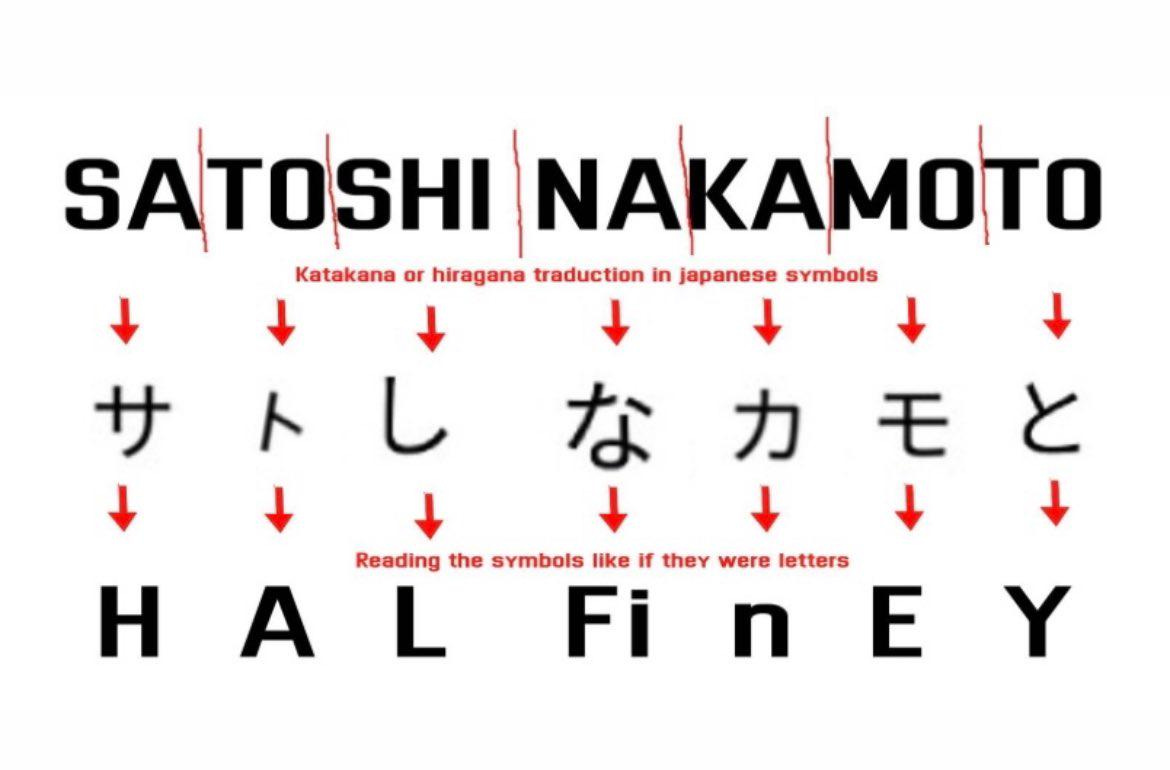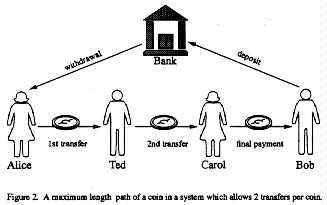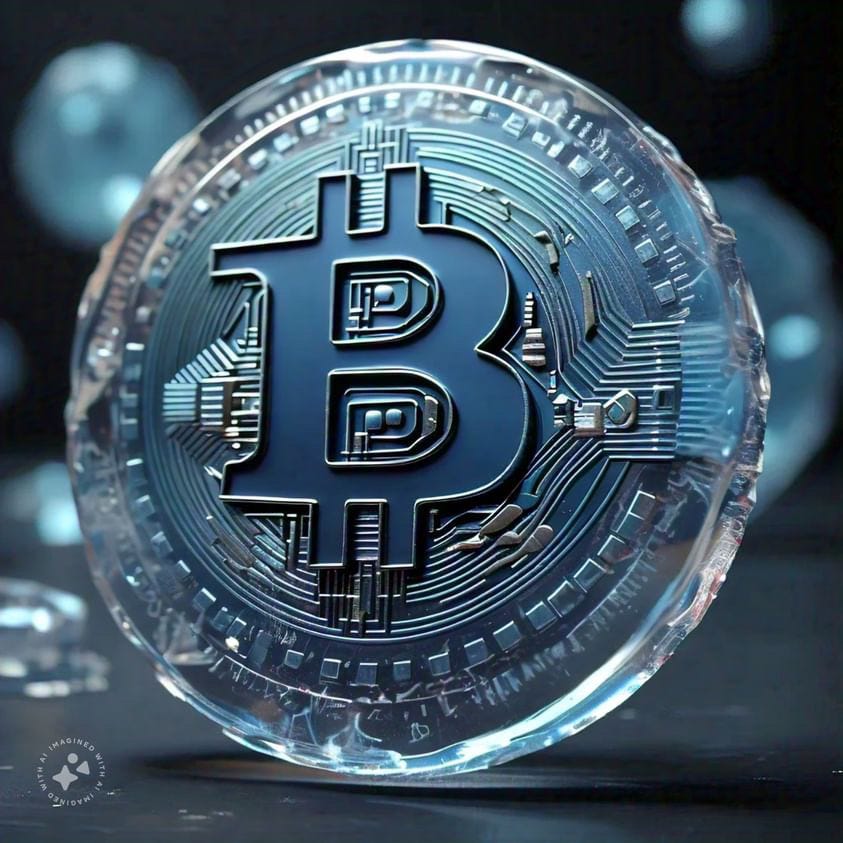Is "Satoshi Nakamoto" cryogenically frozen?
Could Hal Finney and "Satoshi Nakamoto" be one and the same? Maybe, maybe not.
Real quickly, let’s address an imposing question that has more questions than answers. Who or what is, or rather, was “Satoshi Nakamoto”?
Some people including Bitcoin Maxis (those who only believe in Bitcoin and no other cryptocurrency) speculate that “Satoshi Nakamoto” is so mysterious, so godly, that if “Satoshi’s” identity was ever revealed, then the meaning of Bitcoin’s “anonymity” and “scarcity” would cease. Unless this is a reenactment of the Bible, the Quran, or some other ancient lore depicting good and evil minus the grays, Bitcoin and its founder(s)/developer(s) are not that mystical or unique as many pro-establishment capitalists make it out to be. Going off of what Julian Assange once said about Bitcoin, Bitcoin was at one point “the most interesting thing on the internet”. Indeed, most interesting and nowadays most exploitable by Bitcoin Maxis and capitalist oligarchs who serve their donors from AIPAC to BlackRock to Israel and so forth.
Countering what Bitcoin Maxi fanatics and cult-minded individuals think, we have the rational argument of “Satoshi Nakamoto” not being so special or godly; and the name “Satoshi Nakamoto” is just a pseudonym for someone or something. For today, this article will explore one Reddit discussion from 3 years ago where users debated over “Satoshi’s” connection to the CIA. Following that will be a brief breakdown of a couple of notable comparisons between the earliest adopter of Bitcoin, Hal Finney whose cryonically frozen, to that of “Satoshi Nakamoto”.
The first thing that commonly comes up about Hal Finney is he was the first person to “adopt” Bitcoin. And although Hal Finney, before he passed away in 2014, denied being “Satoshi Nakamoto”, Hal Finney’s background could suggest otherwise.
Born in 1956 at Fresno County, California, Finney pursued a BS engineering. He went to develop early video games for Atari such as Adventures of Tron, Armor Ambush, etc.
During the early 90s, Finney became a cryptographic activist, who worried about the possibility of governments or intuitions spying on citizens. Alongside the founder of the P.G.P. software (Pretty Good Privacy), Philip Zimmerman, Finney would use the software to communicate via bulletin board service. Strikingly, the P.G.P. featured an implementation of public-key cryptography, a protocol still used for encryptions on blockchains such as Bitcoin. See image below detailing P.G.P.
Finally, alongside other Cypherpunks, consisting of cryptologists, politicians (yikes!), computer scientists, anyone who valued monetary decentralization and privacy, Finney was involved in experiments including the first ever “Proof-of-work” based currency called RPOW. The project failed but Finney’s contribution(s) years later caught interest of “Satoshi Nakamoto”, the creator of the infamous Bitcoin. Jan 12, 2009, Finney participated in the first Bitcoin transaction, receiving 10 Bitcoins from his “benefactor”…where does this all to?
The Reddit topic defines and asks the latter.
サトシ ("Satoshi" in Katakana) or 覚 ("Satoshi" in Kanji) Means "wisdom" or "sense" in Japanese. (source) ナカモト ("Nakamoto" in Katakana) or 中本 ("Nakamoto" in Kanji) is. From Japanese 中 (naka) meaning "middle" and 本 (moto) meaning "base, root, origin".
Base=Agency Wisdom=Intelligence Middle=Central
What do you guys think? What are the chances a 3 letter agency started Bitcoin?
Unless Hal Finney developed an alter ego, how the heck is Finney suddenly in touch with the anonymous “Satoshi Nakamoto” and perhaps the CIA? First, we must attempt to bridge the connections; if Bitcoin was truly invented by the CIA, then how deep down is Bitcoin linked with other three letter agencies in the United States government? For the longest period of time, Bitcoin trading started exclusively in the United States, from the story of the infamous Pizza trading via Bitcoin, which took place back in 2010 at Florida, to Paypal implementing USD to BTC trade options back in 2011. Paypal, by the way, is heavily linked to Palantir Technologies and Peter Thiel. Does that make Bitcoin essentially linked to the latter? Highly so. For anyone’s indulgence, more information about the first crypto exchange can be found here.
The other three letter agency that comes to mind alongside the CIA is the NSA and its dubious origins surrounding the beginnings of Bitcoin and “electronic cash”. First conceptualized around 1996, the NSA paper “How To Make A Mint: The Cryptography of Anonymous Electronic Cash" proposes how future transactions could be executed via digital online banking. Bear in mind, the term “bank” is heavily referenced to showcase examples of how as early as the 90s, the NSA was interested in a system for users, both the “payers” and “payees”, to trust a transaction that would enforce anonymity and payment untraceability. Examples include transfer of payments among users, electronic wallet, electronic tokens, etc.
Okay, but what does this have to do with Bitcoin, cryptocurrency, and more broadly, blockchain? Plenty but it’s not as obvious at first glance. While modern day terms such as “proof-to-work”, “seed phrases”, “decentralization”, “halving”, etc. are not mentioned in the NSA paper, the blueprints for designing an electronic cash system featuring such concepts including “coins” and “privacy” are intact, with or without banks. Thus, these goals of agencies be it the CIA and/or the NSA started as early as the 90s, and not so much during the 2000s, particularly when Bitcoin and “Satoshi Nakamoto” entered the scenario into the United States as an “unknown” during the post-financial crisis of 2008. Coincidence? Not! One more thing; throwing a wrench out there on the NSA paper…what is up with somebody named Tatsuaki Okamoto? It sounds all too familiar…
Although Finney in 2014 passed away due to complications of ALS (Amyotrophic lateral sclerosis), Finney’s body lived on via cryogenics. Alcor Life Extension Foundation, the nonprofit organization, were responsible for preserving Hal’s body. Both Finney and his wife Fran had been members of Alcor for 20 years; the nonprofit organization accepted the Finney’s donations of Bitcoin to cover the large fraction of the cost. And then, four years later, in 2018, Alcor accepted a $5 million contribution from Brad Armstrong, a cryptocurrency entrepreneur, Alcor member, and admirer of Hal Finney. More information about Alcor’s response to Brad Armstrong’s donation can be found here.
With this large sum of money, Alcor created the Hal Finney Cryonics Research Fund; whose focus is:
Advance the cryopreservation of brain tissue or whole brains, or
Advance the clinical practice of cryonics, including patient stabilization, transport, and cryopreservation practices.
And certainly, Bitcoin! Even at present time, current President and CEO of Alcor, James Arrowood, has commented:
[W]hile Alcor does not hold any cryptocurrency because of the volatility of such digital assets, the non-profit does accept Bitcoin, as it did in the case of BTC donations from fans of Finney. But the company will convert it to fiat.
Nothing wrong here right? Absolutely not; something is wrong here. First, those with “fake” money like Brad Armstrong have a bigger say on what the nonprofit will be all about. Second, Alcor crosses a big line to even think they can use science to wiggle around life and death. One would have to have an extremely huge hubris; thus far, no current patients of Aclor have come back to life. Third, current direction Bitcoin gets worse as more individuals from wealthy status, namely oligarchs billionaires who stand with capitalism and Zionism in order to prep a new digital age involving CBDC (Central Banking Digital Currency), it seems any organization like Alcor does not see the potential plutocratic dystopia that they would indirectly contribute to in the long run. For anyone reading this, does Alcor remind you about the shady transhumanist experiments that were supposedly happening on “Epstein Island”? Let things naturally play out (as in natural causes of death) instead of pretending to be God/Goddess by conducting massive warfare and global sickness.
Is Hal Finney “Satoshi Nakamoto”?
Finally, what similarities if any does Hal Finney have with the characteristics of “Satoshi Nakamoto”? The official home page of Hal Finney describes a short list of what Finney’s plethora of discussions were; in very brief summary:
The real world consists of wolves and sheep (Democracy vs. Libertarianism)
The need to win political, not technological, victories in order to protect privacy. (Politics vs Technology)
The computer can be used as a tool to liberate and protect people, rather than to control them (Why Remailers I; mentions David Chaum).
Digital cash is interesting enough, but its beauty is rather abstract. Rarity is also hard to evaluate (The Beauty of ECash)
Would Hal Finney in 2024 be opposing corporations and the bought-out government?
More peculiar discussions of Hal Finney are found in Hal Finney’s home page. While all of Finney’s commentary sounds nice and promising, when we look at where the United States is now, late stage capitalism that is with government agencies and politicians continuing to deceit the people with false promises, Hal Finney’s ideas and suggestions go moot and may not matter in the long run. Regarding politics, no information of any could be found about what Hal Finney personally thought about the United States and other countries that have sanctioned and bullied by the United States and its militia.
No trace of information from 2000 and onward could be found thus nothing if anything about Hal Finney directly speaking to Julian Assange. What would Hal Finney think about the dystopian directions late stage capitalism is taking America and Western nations towards involving Ai, Big Tech being a monopoly, and potentially his pseudonym “Satoshi Nakamoto” being used an exploitive means by Zionist oligarchs and Wall Street vultures to reiterate what cypherpunks like Hal/Satoshi stood for but ultimately, are after only one thing: profit.
Thus, before Bitcoin and any descending “digital cash” ended up ultimately benefitting oligarchs who strongly support Zionism, before Bitcoin became Zionist Bitcoin, there was Hal Finney and possibly his alter ego “Satoshi Nakamoto”. Finney’s somewhat ominous background about the future is left entirely up to the individual to decide. If Hal Finney had survived years later, would he be standing alongside the people or would Finney serve as another piece of cog to continue to keep late stage capitalism afloat?
And with all the effort put from Alcor to ultimately revive Hal Finney via cryogenics, is Hal Finney worth reviving back? Respectfully no; let Hal and hopefully “Satoshi Nakamoto” rest. Is the “true” identity of “Satoshi Nakamoto” worth debunking at this time? No, not at this time. And although no public community would ever directly approve so-called secret project(s) Hal/“Satoshi” were involved in, be it “electronic cash” and/or “peer-to-peer” blockchain, there was a moment of time where people could have saw the benefits of blockchain technology but without the technology being heavily comprised by corporate greed and politics.
As it stands, people here in the US and elsewhere globally are still struggling, working multiple jobs, cannot financially secure themselves via assets and retirement while prices of nearly everything continues rising. How can a majority of people even find themselves to be distracted with waiting for a cypherpunk man to be revived? And certainly, more and more people are starting to recognize that advanced technology and digital currencies, potentially of first world origins, under imperialism hands such as Zionists, have no intention to helping anyone but the oligarchs. Any government agency with a three letter do not directly serve the people and their essential needs.
#FreePalestine 🇵🇸 #FuckBitcoin
-Golden Monarch







